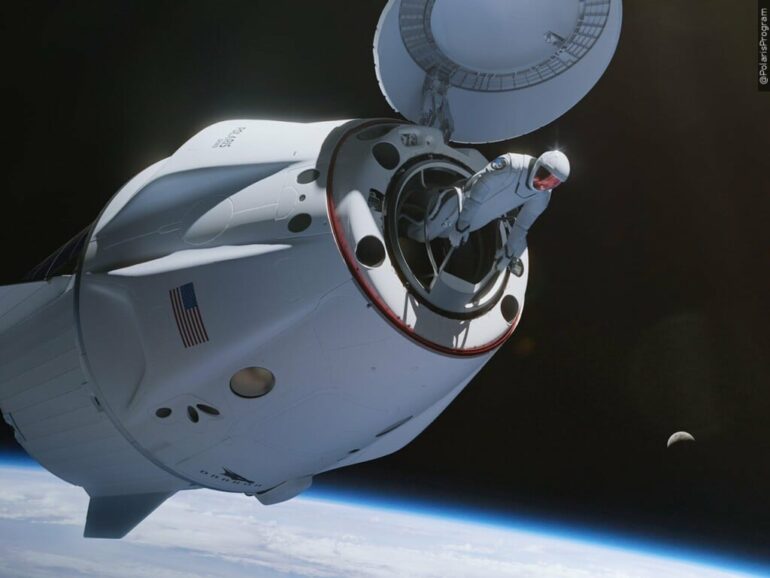Space is an unnatural environment for humans. We can’t survive unprotected in a pure vacuum for more than two minutes. Getting to space involves being strapped to a barely contained chemical explosion.
Since 1961, fewer than 700 people have been into space. Private space companies such as SpaceX and Blue Origin hope to boost that number to many thousands, and SpaceX is already taking bookings for flights to Earth orbit.
I’m an astronomer who has written extensively about space travel, including a book about our future off-Earth. I think a lot about the risks and rewards of exploring space.
As the commercial space industry takes off, there will be accidents and people will die. Polaris Dawn, planned to launch early in September 2024, will be a high-risk mission using only civilian astronauts. So, now is a good time to assess the risks and rewards of leaving the Earth.
Space travel is dangerous
Most Americans vividly recall the disasters that led to the loss of 14 astronauts’ lives. Two of the five space shuttles disintegrated, Challenger in 1986 soon after launch and Columbia in 2003 on reentry.
The Challenger and Columbia accidents are two of the most prominent examples of the risk that comes with human spaceflight.
In total, 30 astronauts and cosmonauts have died while training for or during space missions.
There have also been dozens of close calls. Two astronauts are currently staying on the International Space Station for an extra six months because NASA declared their Boeing Starliner vehicle unsafe for the return journey. Starliner has had many problems during its development, including flammable tape, stuck valves and inadequate parachute systems. But a critical thruster malfunction is what caused NASA to abandon it as a return vehicle.
It’s not always safe on the ground, either. In addition to the three Apollo 1 astronauts who died in a 1967 launch pad fire, about 120 people died in the launchpad explosion of an unmanned rocket in Russia in 1960, and hundreds died in 1996 when a Chinese rocket veered off course and crashed into a nearby village.
The fatality rate of people traveling in space is about 3%. That sounds low, but it’s higher than extreme sports such as BASE jumping or jumping off a cliff wearing a wingsuit. The only recreations that rival the risk of space travel are solo free-climbing and climbing above 19,685 feet (6,000 meters) in the Himalayas.
Civilians in space
The 2020s have kicked off the era of civilian astronauts. After the death of schoolteacher Christa McAuliffe in the Challenger disaster, NASA stopped sending civilians into space. But for commercial space companies, it’s part of the business model.
The first all-civilian crew to reach orbit rode a SpaceX Dragon spacecraft in 2021, the Inspiration 4 mission. Since 2020, 69 private astronauts have gone to space, although only 46 reached the Kármán line – the…



